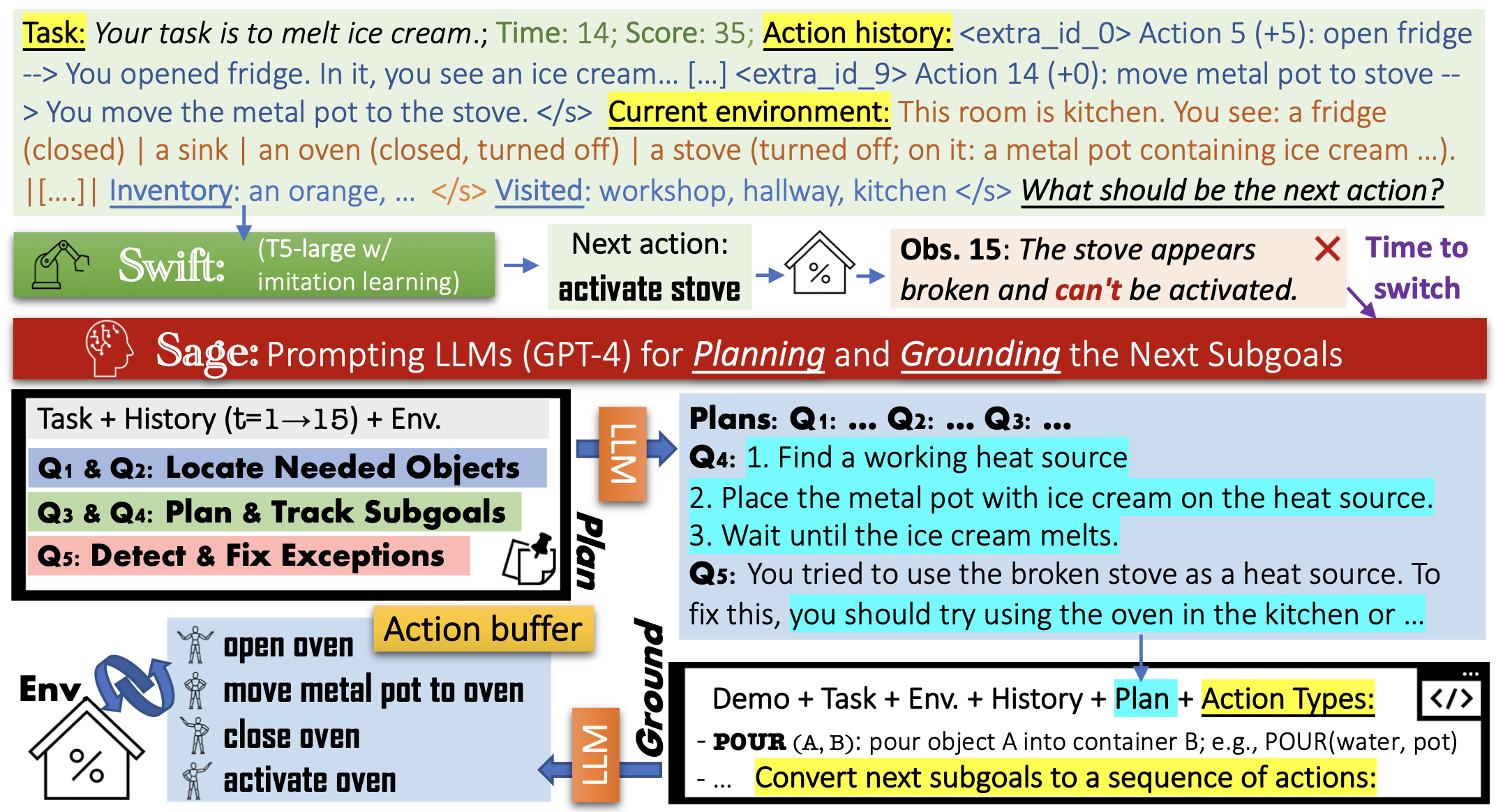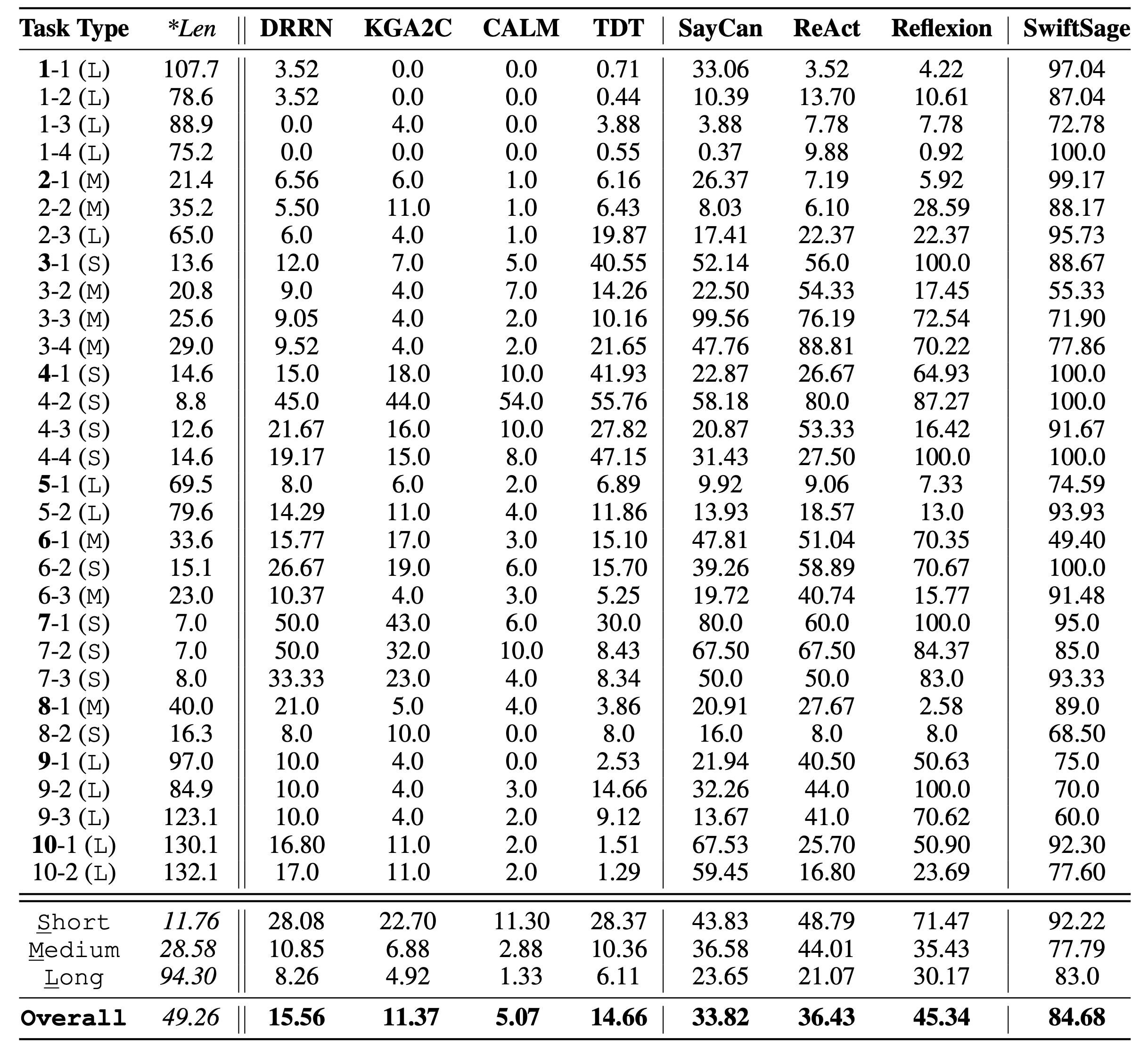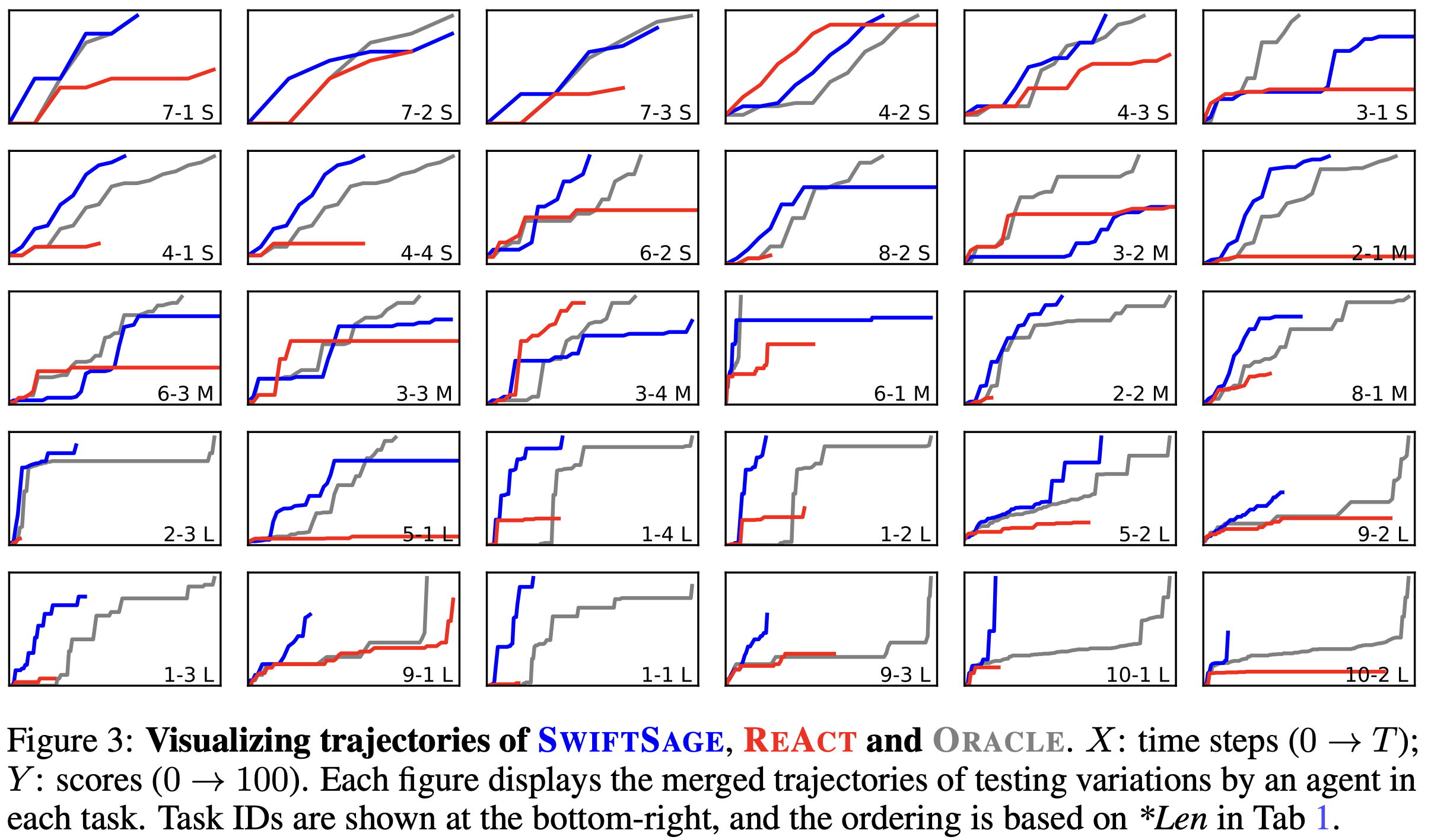[show more]
Efficiency. To thoroughly examine the efficiency of agents across all task types, we use Figure 3 to visualize the average trajectories of the first three testing variations for each task involving SwiftSage, ReAct, and the oracle agent. We arrange the tasks based on their average lengths of oracle trajectories (*Len in Table 1). We observe that oracle trajectories consistently achieve perfect scores, yet SwiftSage can reach similar scores more efficiently. This is particularly evident in longer tasks (the bottom two rows), although SwiftSage does not achieve a perfect score for a few tasks (e.g., 9-2 and 1-3). Interestingly, we find that ReAct performs competitively in shorter tasks (e.g., 4-2 and 3-4), but most trajectories plateau at an intermediate score and fail to reach 100.
Cost-effectiveness. Despite SAGE invoking LLMs APIs twice for inference, its overall cost remains lower, as the result is a sequence of actions typically containing about 5 actions. In comparison, SayCan and ReAct require 1,855.84 and 1,971.03 tokens per action (tpa) respectively, while Reflexion necessitates 2,983.46 tpa. SwiftSage, on the other hand, only uses 757.07 tpa. Given its superior performance, SwiftSage proves more cost-effective than other LLM-based methods. This efficiency is primarily attributed to invoking LLMs only when needed (courtesy of our strong SWIFT module) and the action buffer mechanism.










